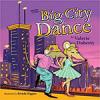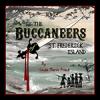Between Inca Walls: A Peace Corps Memoir
After writing my own memoir, “Different Latitudes, My Life in the Peace Corps and Beyond”, I began paying more attention to this genre and have reviewed several books of fellow Returned Peace Corps Volunteers. This book interested me as well because I’ve traveled through Peru several times over the years and my Son-In-Law is Peruvian.














































